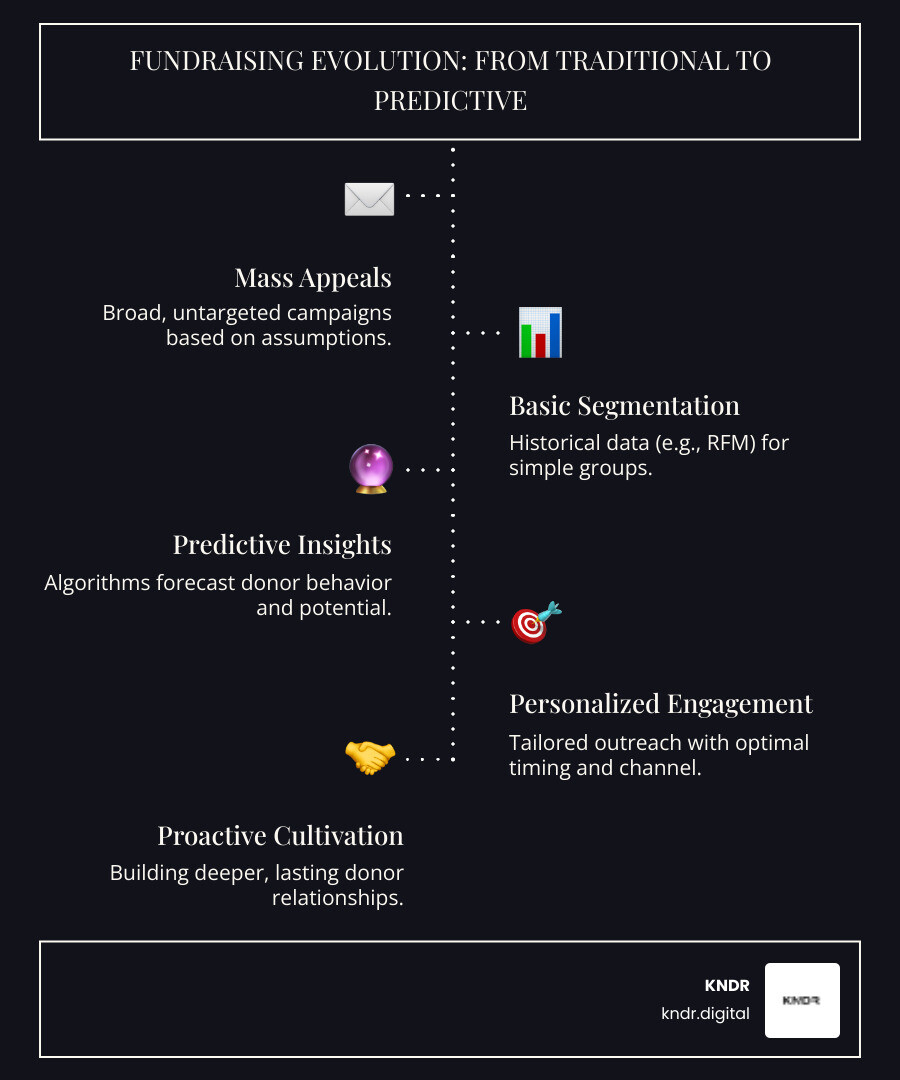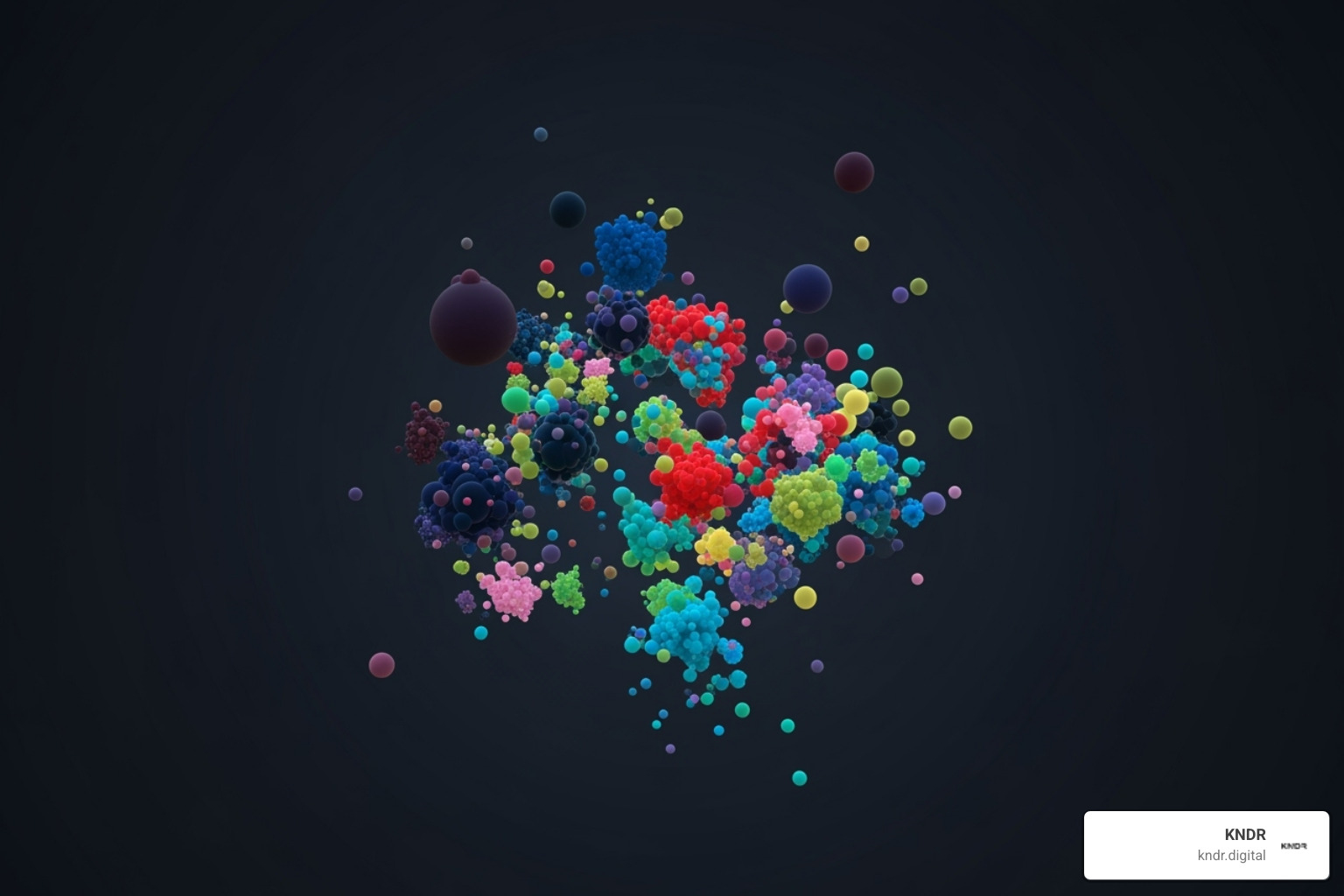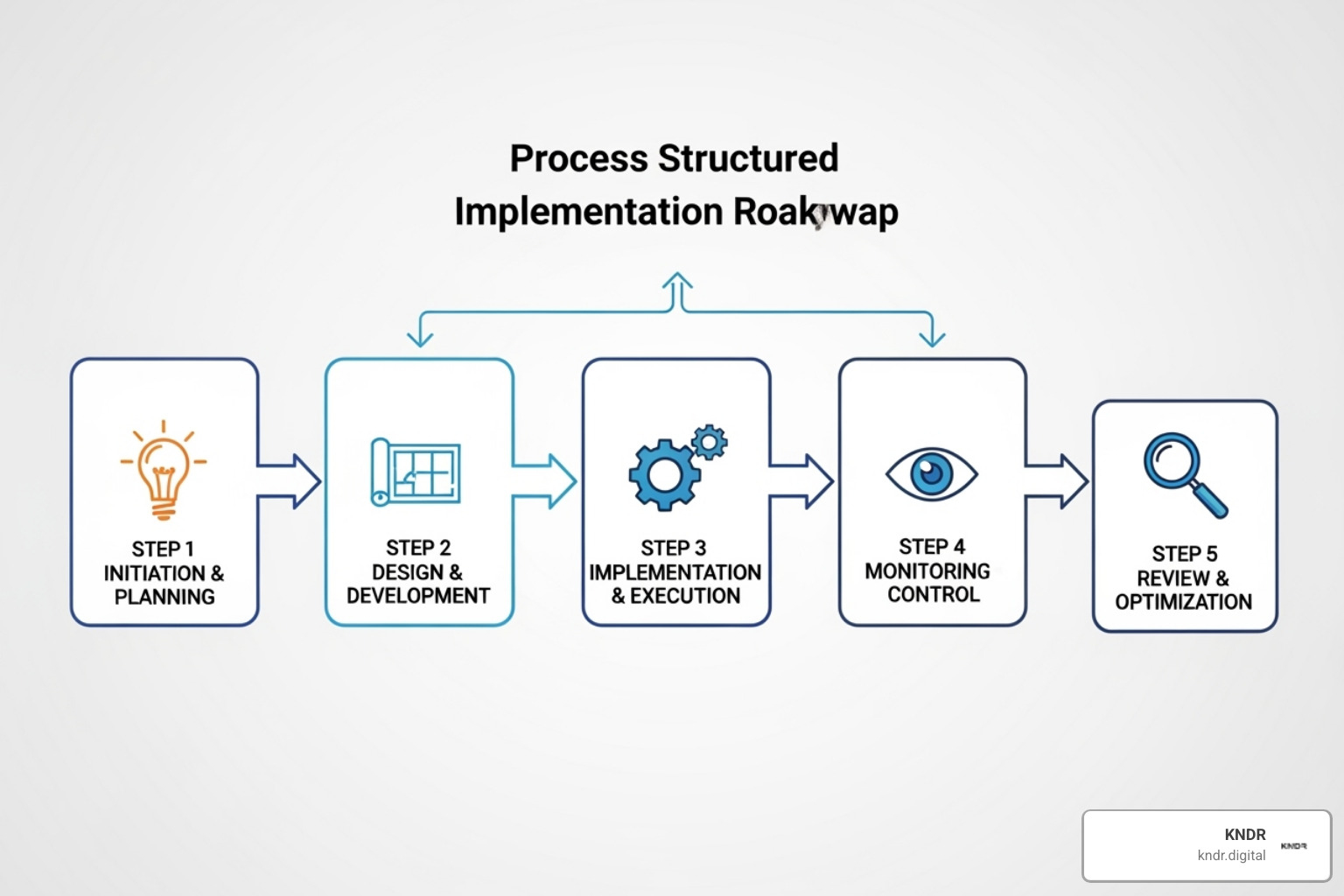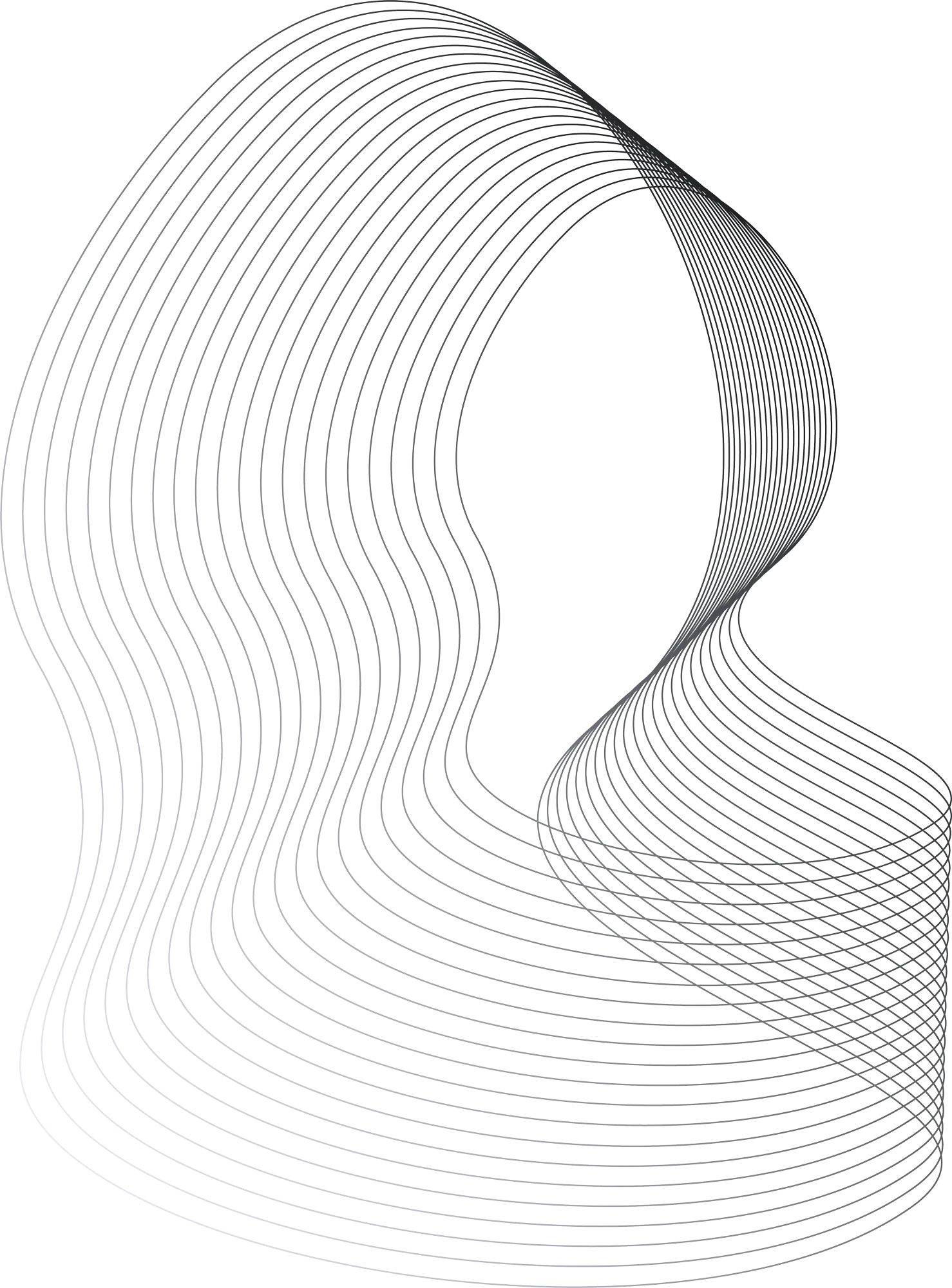Unlock Donor Potential: A Guide to Predictive Analytics in Fundraising

Why Predictive Analytics is Revolutionizing Nonprofit Fundraising
Predictive analytics for fundraising uses data, statistical algorithms, and machine learning to forecast donor behavior and optimize fundraising strategies. Instead of relying on gut feelings or outdated segmentation methods, nonprofits can now predict who will donate, when they'll give, and how much they're likely to contribute.
Key applications of predictive analytics for fundraising:
- Donor identification - Find statistical "look-alikes" of your best donors
- Giving predictions - Forecast donation amounts and timing
- Churn prevention - Identify donors at risk of lapsing
- Campaign optimization - Target the right donors with personalized messaging
- Resource allocation - Focus efforts on high-potential prospects
The results speak for themselves. Organizations using predictive analytics have seen their "Top Prioritized Prospects" donate seven times more compared to other donors. This isn't just about raising more money - it's about building deeper relationships with supporters while making every dollar of your fundraising budget work harder.
The shift from traditional fundraising to data-driven approaches is happening fast. As one industry expert noted, "The art of nonprofit fundraising is quickly becoming a science." With donor competition intensifying and funding becoming less predictable, nonprofits that accept predictive analytics gain a significant advantage in identifying, engaging, and retaining supporters.
I'm Mahir Iskender, CEO of KNDR.digital, where I help mission-driven organizations scale through AI-powered marketing and digital fundraising systems. Having worked with nonprofits to implement predictive analytics for fundraising, I've seen how these tools transform donor relationships and campaign results.

Related content about predictive analytics for fundraising:
- donor segmentation strategies
- digital marketing strategy for fundraising
- digital fundraising strategies
What is Predictive Analytics and How Does It Transform Fundraising?
Picture this: instead of sending the same fundraising appeal to your entire donor list and hoping for the best, you could know in advance which supporters are most likely to give, how much they might donate, and even the perfect time to reach out. That's the power of predictive analytics for fundraising – it transforms educated guesses into data-driven certainty.
Predictive analytics for fundraising uses statistical algorithms and machine learning to analyze your organization's historical data and forecast future donor behavior. Think of it as having a really smart friend who's incredibly good at spotting patterns. This friend looks at everything – past donations, email engagement, event attendance, demographic information – and then tells you what's likely to happen next.
For nonprofits, this means moving beyond the traditional "spray and pray" approach. Instead of treating all donors the same, you can create targeted strategies based on actual data insights. You'll know which major donor prospects are ready for cultivation, which monthly donors might be considering an upgrade, and which supporters need extra attention to prevent them from lapsing.
The change happens when you shift from reactive fundraising to proactive relationship building. As we explore in our guides on Data-Driven Fundraising and AI-Driven Fundraising, this approach helps nonprofits make smarter decisions and build stronger connections with their supporters.
The Core Concept: From Guesswork to Insight
Traditional fundraising often feels like throwing spaghetti at the wall to see what sticks. You send out appeals, host events, and make donor visits based on intuition and past experience. Then you wait months to see what worked, adjusting your strategy for the next campaign cycle.
Predictive analytics for fundraising flips this approach on its head. Instead of learning from what happened months ago, you can anticipate what's about to happen next week.
Here's how it works: the system analyzes your historical data to identify subtle patterns in donor behavior. Maybe donors who attend your virtual events are three times more likely to make year-end gifts. Or perhaps supporters who engage with your social media posts tend to increase their giving during economic downturns. These insights become the foundation for proactive strategy.
The magic happens through pattern recognition. The algorithms spot connections that would be impossible for humans to detect manually. They might find that donors who give small amounts consistently for two years often make major gifts in their third year, or that supporters from certain zip codes prefer text messages over email appeals.
This transforms raw information into actionable insights. Instead of guessing which donors to prioritize for your capital campaign, you'll have data showing exactly who's most likely to respond positively. Your fundraising team can focus their energy on the highest-potential prospects while nurturing other supporters through automated channels.
Predictive AI vs. Generative AI in Fundraising
When people hear "AI in fundraising," they often think of tools like ChatGPT writing donation appeals. But there are actually two distinct types of artificial intelligence helping nonprofits, and understanding the difference is crucial for building an effective strategy.
Predictive AI is your strategic advisor. It analyzes data to forecast future outcomes and make recommendations. This technology answers questions like "Who should we ask for a major gift?" or "Which donors are at risk of stopping their monthly contributions?" It's all about using existing information to predict what comes next.
Generative AI is your creative assistant. It creates new content from scratch – writing email appeals, designing social media posts, or even generating thank-you videos. This technology takes your ideas and turns them into polished communications that engage your supporters.
Think of Predictive AI as telling you who to talk to and what to ask for, while Generative AI helps you craft how to say it. One informs your strategy, the other helps with execution.
For example, Predictive AI might identify that Sarah, a long-time monthly donor, has a 85% likelihood of making a year-end gift and could potentially give $500 based on her giving history and engagement patterns. Then Generative AI could help you write a personalized appeal that speaks to Sarah's specific interests and giving motivations.
These complementary tools work best when used together. The predictive insights ensure you're targeting the right people with the right asks, while the generative capabilities help you create compelling, personalized messages at scale. Both support the same goal: building stronger relationships with your donors while making your fundraising efforts more efficient and effective.
The key is remembering that AI improves human judgment rather than replacing it. Your team's expertise in mission, relationships, and donor stewardship remains irreplaceable – these tools just help you work smarter and achieve better results.
Key Predictions and Benefits for Nonprofits

The real magic of predictive analytics for fundraising happens when we see what it can actually predict and how those predictions transform our work. Instead of wondering which donors might respond to our next campaign, we get clear insights that help us make smart decisions about where to focus our energy.
Think of it this way: every nonprofit has limited time, budget, and staff. Predictive analytics for fundraising helps us use these precious resources where they'll make the biggest difference. The result? Higher returns on our campaigns, stronger relationships with donors, and fundraising strategies that actually work. This approach fits perfectly with proven Nonprofit Donor Engagement Strategies.
What Can You Predict with Analytics?
The possibilities might surprise you. Predictive analytics for fundraising can forecast a wide range of donor behaviors that directly impact your bottom line.
Likelihood to donate is probably the most valuable prediction. By looking at past donor patterns, we can assign each person in our database a probability score. This means we know who's most likely to say "yes" when we reach out, whether they're brand new prospects or longtime supporters.
But knowing if someone will give is just the beginning. Potential donation amount predictions help us understand how much each donor might contribute. This lets us tailor our ask amounts and focus extra attention on high-value prospects, even if their probability of giving is slightly lower than smaller donors.
Major donor identification is where things get really exciting. The system analyzes what makes your current major donors special, then finds people in your database who share those same characteristics. It's like having a talent scout for philanthropy, helping you find hidden gems among your supporters.
Donor churn risk predictions act like an early warning system. They flag supporters who might be drifting away before they actually stop giving. This gives us time to reach out with special attention, saving relationships that would be much harder (and more expensive) to rebuild later.
We can even predict optimal communication channels - whether someone prefers email, direct mail, phone calls, or social media. This ensures our messages reach people in the way they want to hear from us.
The results speak for themselves. UNICEF Australia saw 26% more net revenue and 35% better campaign ROI using predictive analytics, while saving $30,000 by sending 15,000 fewer mailers. These aren't just impressive numbers - they represent real impact for the communities they serve.
The Top Benefits of Using Predictive Analytics for Fundraising
When nonprofits accept predictive analytics for fundraising, the benefits ripple through every aspect of their work. It's not just about raising more money - though that certainly happens.
Maximizing campaign results becomes second nature when you know exactly who to target. Instead of sending appeals to everyone and hoping for the best, you can focus on people most likely to respond. It's the difference between fishing with a net and fishing with precision.
The numbers don't lie when it comes to return on investment. Organizations using predictive analytics see their "Top Prioritized Prospects" donate seven times more compared to other donors. That's not a small improvement - it's a complete change of campaign effectiveness.
Deeper donor relationships naturally develop when you understand your supporters better. Personalized outreach feels authentic because it's based on real insights, not guesswork. Donors notice when communications feel relevant to their interests and giving patterns. This personal touch is at the heart of effective Donor Relationship Management.
Efficient resource allocation becomes much easier when data guides your decisions. Whether you're deciding which lapsed donors to re-engage or how much to invest in major gift prospects, predictive analytics helps ensure every dollar of your fundraising budget works harder.
Perhaps most importantly, strategic decision-making shifts from reactive to proactive. Instead of waiting to see how campaigns perform, you can anticipate what will work best and adjust your approach before launching. This forward-thinking approach helps nonprofits stay ahead of challenges and capitalize on opportunities.
A Practical Guide to Implementing Predictive Analytics for Fundraising
Implementing predictive analytics for fundraising might seem overwhelming, but it's a structured process any nonprofit can tackle without a team of data scientists or a massive budget. Think of it as a recipe: when broken down step-by-step, it becomes manageable. This practical approach, which builds on strategies from our Implementing AI for Donor Retention: The Complete Playbook, requires commitment to a data-informed culture. When you accept this mindset, the rewards can transform your fundraising.

The 5-Step Implementation Roadmap
Let me walk you through the roadmap that's worked for countless nonprofits. Each step builds on the previous one, creating a solid foundation for your predictive analytics for fundraising journey.
Step 1: Define Your Goals is where everything starts. Before diving into data, ask yourself: what specific problems are we trying to solve? Maybe you're struggling with donor retention and want to identify people at risk of lapsing. Or perhaps you need to find major gift prospects but don't know where to look. Being crystal clear about your goals helps you focus your efforts and measure success later.
Step 2: Data Collection and Hygiene is where the real work begins. This crucial step involves gathering all relevant data—donation records, engagement history, demographics—and ensuring its quality. Messy data leads to misleading insights, so you'll need to audit your database, remove duplicates, standardize formats, and establish processes to keep information current. The cleaner your data, the better your predictions will be.
Step 3: Model Development is where the magic happens. Using statistical algorithms and machine learning, you'll build models that learn from historical patterns to predict future behavior. Don't worry if this sounds technical – many tools today make this process much more accessible than it used to be.
Step 4: Analyze and Act transforms your model's output into real-world results. This isn't about creating pretty charts for board meetings (though those help too). It's about turning insights into actionable strategies – like segmenting donors for targeted campaigns or identifying the best time to make an ask.
Step 5: Iterate and Refine recognizes that predictive analytics is a living process. Donor behavior changes, your organization grows, and external factors shift the landscape. Plan to refresh your models every three to six months, or whenever you see a significant change in your data or results.
Key Tools and Data for a Strong Foundation
Building effective predictive analytics for fundraising requires the right combination of tools and data sources. Your CRM integration forms the backbone of everything you'll do. A well-connected CRM system acts like the central nervous system of your fundraising efforts, feeding data to your analytics tools and receiving insights back to guide your outreach.
Beyond your CRM, you'll need data management tools that can handle analysis and visualization. These range from simple solutions for smaller organizations to sophisticated platforms for larger nonprofits. The key is finding tools that integrate well with your existing systems and provide the performance data you need.
Here's something many organizations miss: effective predictive modeling goes far beyond giving data. Yes, donation history is important, but your most powerful insights come from combining multiple data sources. Demographics, geographic location, engagement patterns, event attendance, website behavior, and social connections all contribute to a complete picture of your donors. This holistic view dramatically improves prediction accuracy.
Overcoming Common Challenges
Every nonprofit faces obstacles when implementing predictive analytics, but none of them are impossible. Data quality issues top the list of challenges. Incomplete records, duplicate entries, and outdated information can skew your results. The solution? Establish strong data governance practices from day one and make data hygiene a regular part of your routine.
The technical expertise gap worries many organizations, especially smaller nonprofits. You might not have data scientists on staff, and that's perfectly fine. Working with experienced consultants or technology partners can bridge this gap while building internal capacity over time.
Data privacy and ethics require careful attention in today's environment. Your donors trust you with their information, and that trust is sacred. Be transparent about how you use data, secure it properly, and always comply with relevant regulations. Ethical AI practices aren't just good business – they're essential for maintaining donor relationships.
Budget constraints often make organizations hesitate, but predictive analytics doesn't require a massive investment upfront. Start small with one specific challenge, test your approach, and scale based on results. Many organizations see positive ROI within the first few months.
Ensuring model accuracy is an ongoing responsibility. Models can drift over time as conditions change, so regular monitoring and refreshing are essential. Only continue with models that demonstrate clear value and high return on investment.
The truth is, implementing predictive analytics requires effort and patience. But when you see donors responding to perfectly timed, personalized outreach – and when you watch your fundraising results improve month after month – you'll know the investment was worth it.
Frequently Asked Questions about Predictive Analytics
I get tons of questions about predictive analytics for fundraising from nonprofit leaders. It's exciting to see so much interest, but I also understand there's some uncertainty about when and how to dive in. Let me address the questions I hear most often.
When should my nonprofit consider using predictive analytics?
The short answer? Probably sooner than you think. Predictive analytics for fundraising isn't just for massive organizations with unlimited budgets. In fact, I often recommend it when nonprofits are feeling the squeeze.
If you're facing increased donor competition, you know how challenging it's become to stand out in crowded inboxes and mailboxes. Every nonprofit is vying for attention, and the old "spray and pray" approach just doesn't cut it anymore. Predictive analytics helps you identify who's most likely to engage, so you're not shouting into the void.
Maybe your fundraising goals consistently aren't being met. This is frustrating, but it's also a clear signal that your current approach needs some fine-tuning. Instead of working harder with the same strategies, predictive analytics helps you work smarter by focusing your energy where it's most likely to pay off.
A shrinking donor base is another red flag that predictive analytics can address. When you're losing more donors than you're gaining, you need to understand why people are leaving and how to keep the ones you have. Predictive models can spot donors at risk of lapsing before they actually do.
Finally, if you simply want to improve efficiency with your limited resources, predictive analytics is like having a really smart assistant who never sleeps. It helps you make better decisions about where to invest your time, money, and energy.
Even if you only have hundreds or thousands of donor records, these tools can be incredibly effective. You don't need a massive database to start seeing results.
How does this differ from traditional donor segmentation?
Traditional donor segmentation has been the backbone of fundraising for decades, but it's a bit like driving while only looking in your rearview mirror.
Most nonprofits use RFM segmentation - grouping donors by how recently they gave (Recency), how often they give (Frequency), and how much they typically donate (Monetary value). This approach is descriptive, telling you what happened in the past. It's useful, but it's also limited because it assumes past behavior perfectly predicts future actions.
Predictive analytics for fundraising flips this approach. Instead of being descriptive (what happened), it's predictive (what will happen). Rather than looking backward at historical patterns, it looks forward to anticipate future behavior.
The difference is pretty remarkable. Traditional segmentation might tell you that Sarah gave $100 last December and hasn't given since. Predictive analytics would analyze dozens of factors - her engagement with your emails, her demographic profile, similar donors' behavior patterns - and assign her a likelihood score for responding to your upcoming campaign.
Traditional segmentation creates static groups that don't change much over time. Predictive analytics creates dynamic segmentation that updates as new information comes in. A donor might move from "low likelihood" to "high likelihood" based on their recent interactions with your organization.
This connects directly to more effective Donor Segmentation Strategies that evolve with your donors instead of staying stuck in the past.
Can small nonprofits benefit from predictive analytics?
Absolutely, and this might be the most important question I get. There's this myth floating around that predictive analytics for fundraising is only for huge organizations with million-dollar budgets and teams of data scientists. That's simply not true.
I've seen nonprofits with just a few thousand donor records achieve remarkable results. The key isn't having massive amounts of data - it's having quality data and knowing how to use it effectively.
Scalable solutions have made predictive analytics accessible to organizations of all sizes. You don't need to hire a full-time data scientist or invest in expensive enterprise software. Many tools are designed specifically for smaller nonprofits, offering powerful insights without the complexity.
Small nonprofits actually have some advantages when it comes to implementing predictive analytics. You're typically more agile, can make decisions faster, and often have cleaner data because you haven't been collecting it for decades across multiple systems.
The focus on high-impact predictions is especially valuable for smaller organizations. Instead of trying to predict everything, you can zero in on the predictions that will make the biggest difference. Maybe that's identifying your top 50 major donor prospects, or finding which 200 lapsed donors are most likely to return.
Think about it this way: if you're operating on a tight budget, you literally cannot afford to waste resources on donors who aren't likely to respond. Predictive analytics for fundraising helps ensure every dollar of your marketing budget and every hour of your team's time is spent on the highest-potential opportunities.
The future belongs to nonprofits that can make data-driven decisions quickly and efficiently. Size doesn't determine success - smart strategy does.
Conclusion: Build a Smarter Fundraising Future

The world of nonprofit fundraising is changing fast, and predictive analytics for fundraising isn't just riding the wave – it's creating it. We're witnessing a fascinating shift from the traditional "art" of asking for donations to the emerging "science" of truly understanding our donors and predicting their behavior.
Throughout this guide, we've finded how predictive analytics transforms fundraising from reactive guesswork into proactive strategy. Instead of hoping our appeals will resonate, we can now predict who's most likely to give, when they'll give, and how much they might contribute. We've seen real organizations achieve remarkable results – like those "Top Prioritized Prospects" donating seven times more than other donors.
What makes this especially exciting is that predictive analytics for fundraising doesn't replace the human heart of fundraising. It's not about turning fundraisers into robots or removing the personal touch that makes nonprofit work so meaningful. Instead, it's about augmenting fundraisers with powerful insights that free them from guesswork and manual tasks.
Think of it this way: when your fundraising team knows exactly which donors are most likely to upgrade their giving or which supporters might be at risk of lapsing, they can spend their time building deeper relationships instead of shooting in the dark. This creates a data-driven culture where every decision is informed, every outreach is purposeful, and every donor feels truly understood.
The future of fundraising is already here for organizations brave enough to accept it. It's intelligent, personalized, and incredibly impactful. At KNDR, we've seen how these tools transform not just donation numbers, but entire organizational cultures. As a Digital Fundraising Agency focused on results, we're committed to helping nonprofits steer this exciting landscape with confidence.
Whether you're a small nonprofit with hundreds of donors or a large organization with thousands of supporters, the opportunity to build a smarter fundraising future is within reach. The question isn't whether predictive analytics will reshape fundraising – it's whether your organization will lead this change or follow behind.


